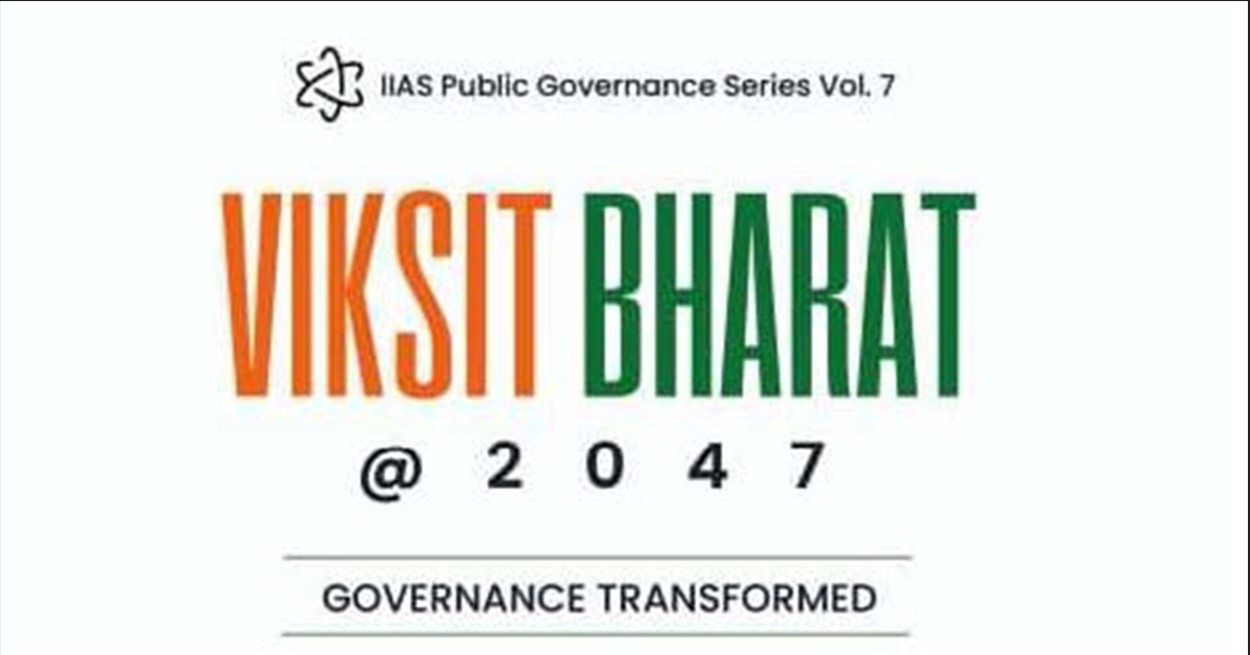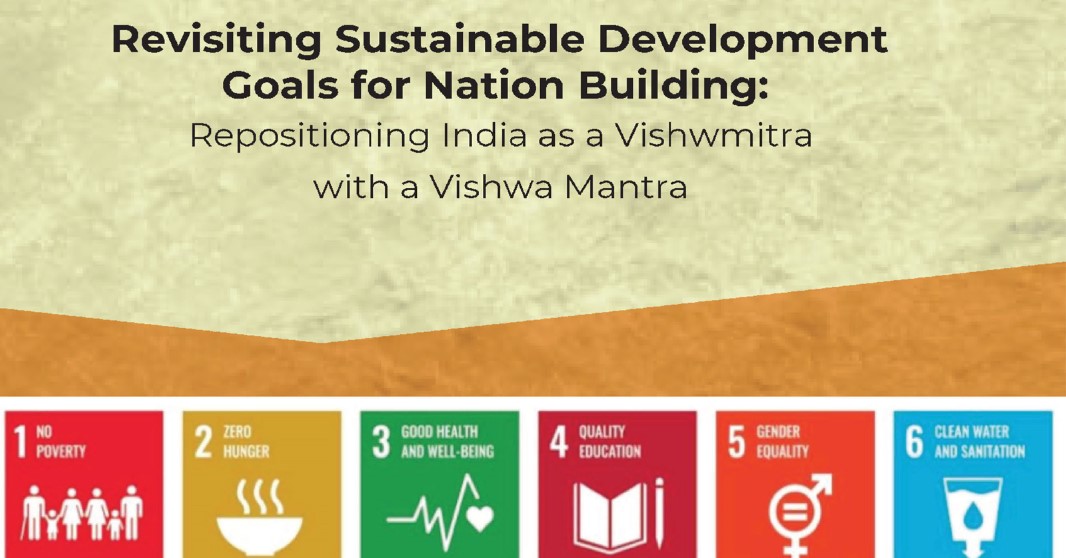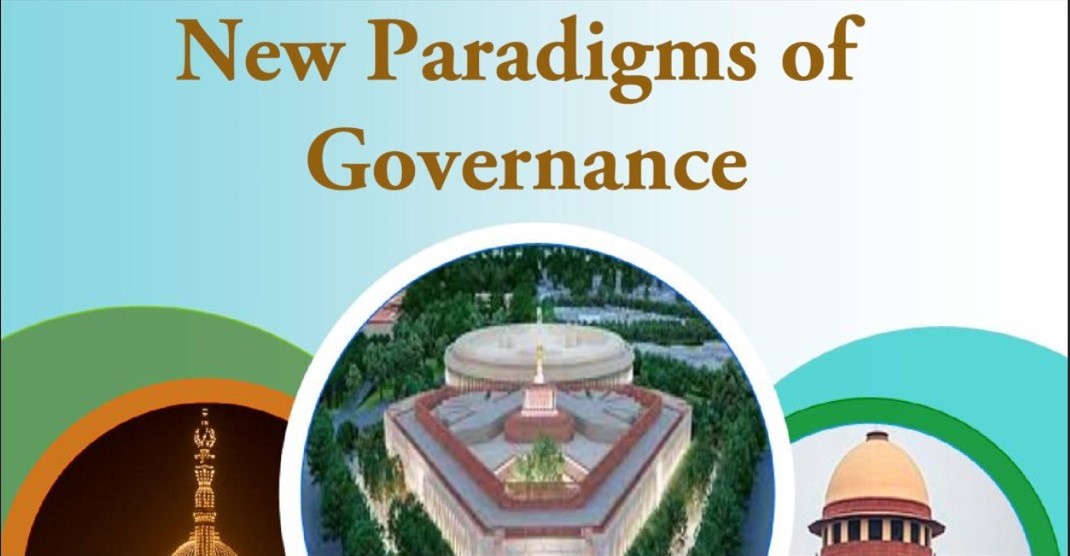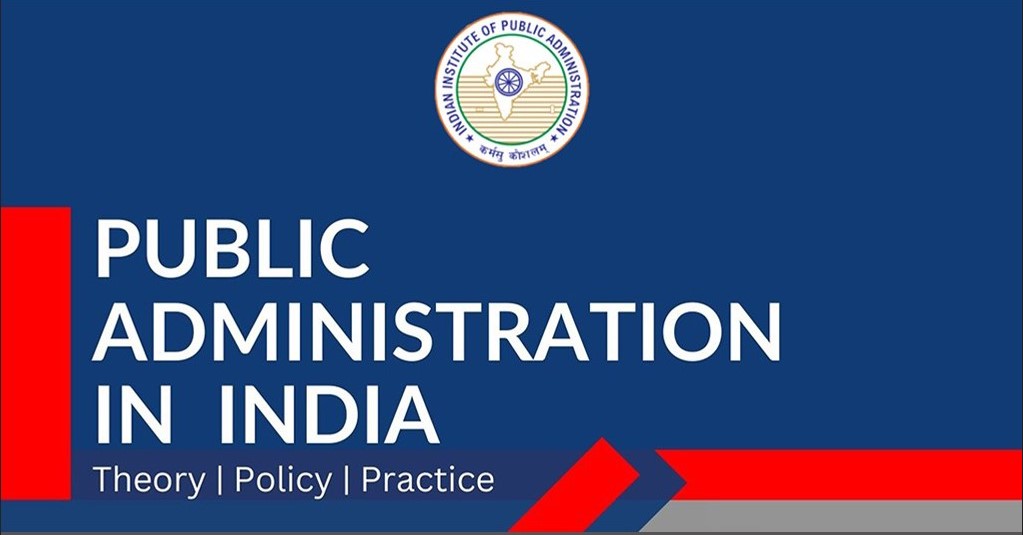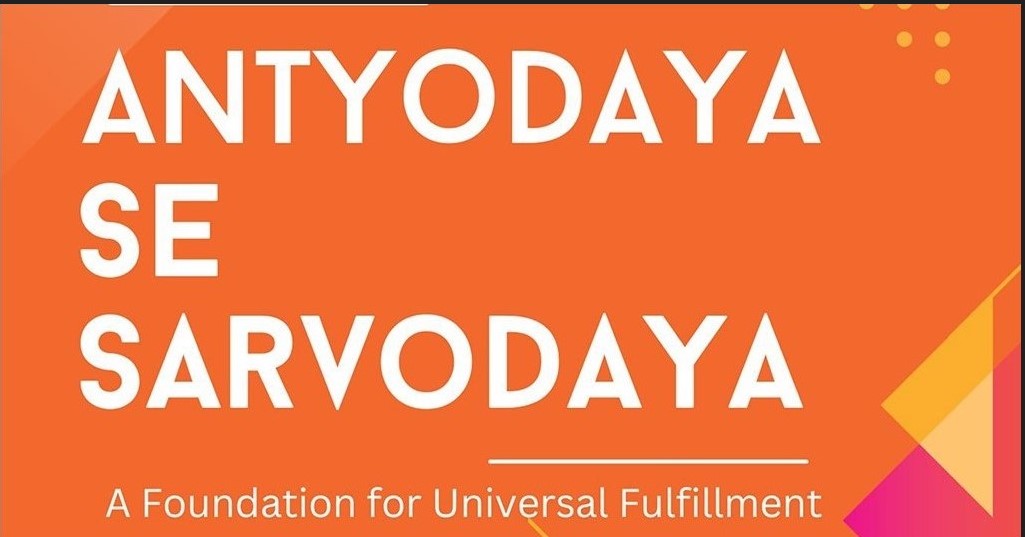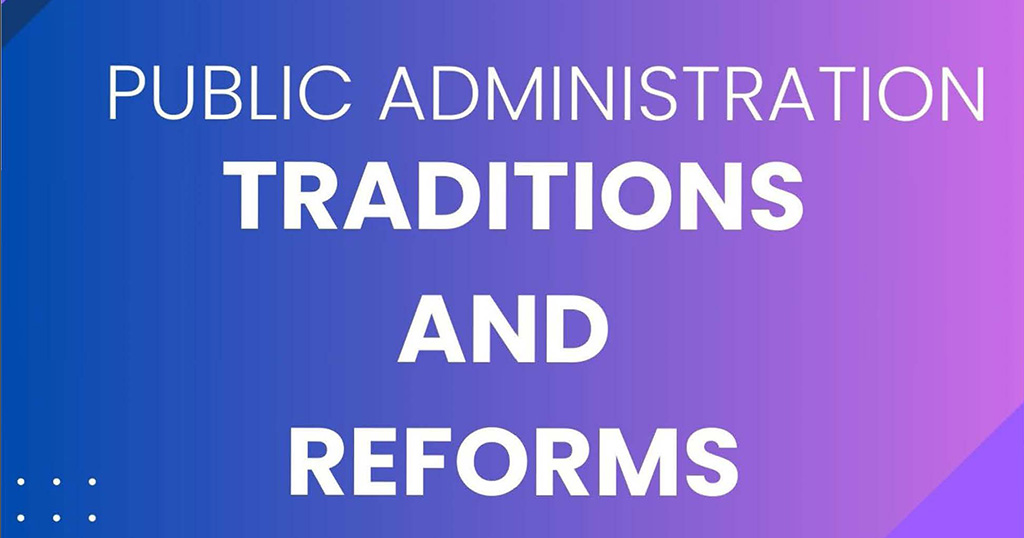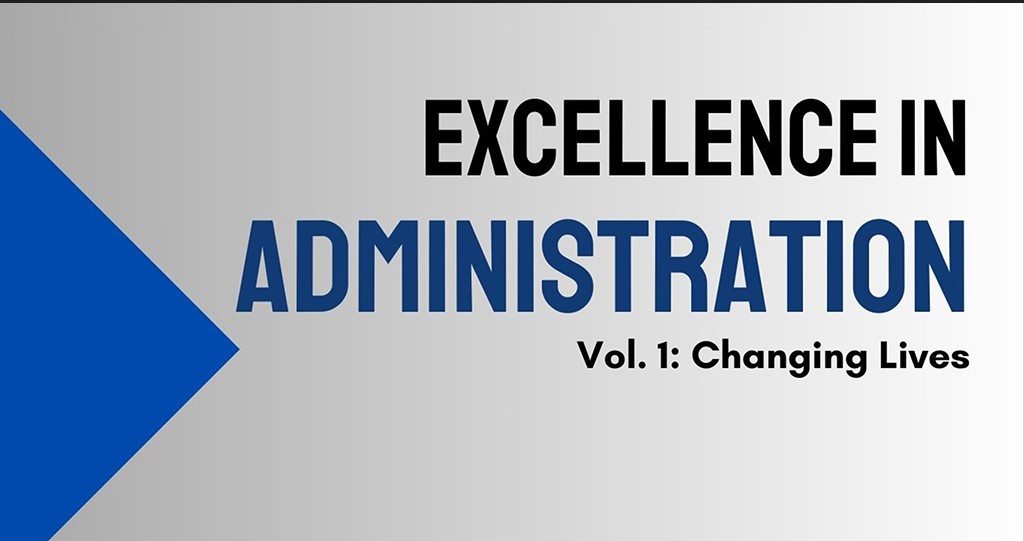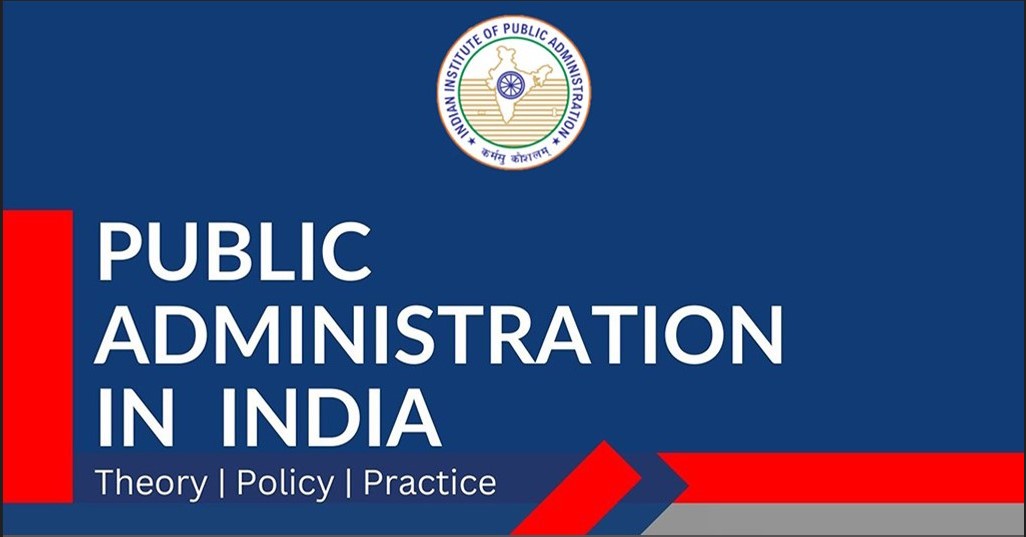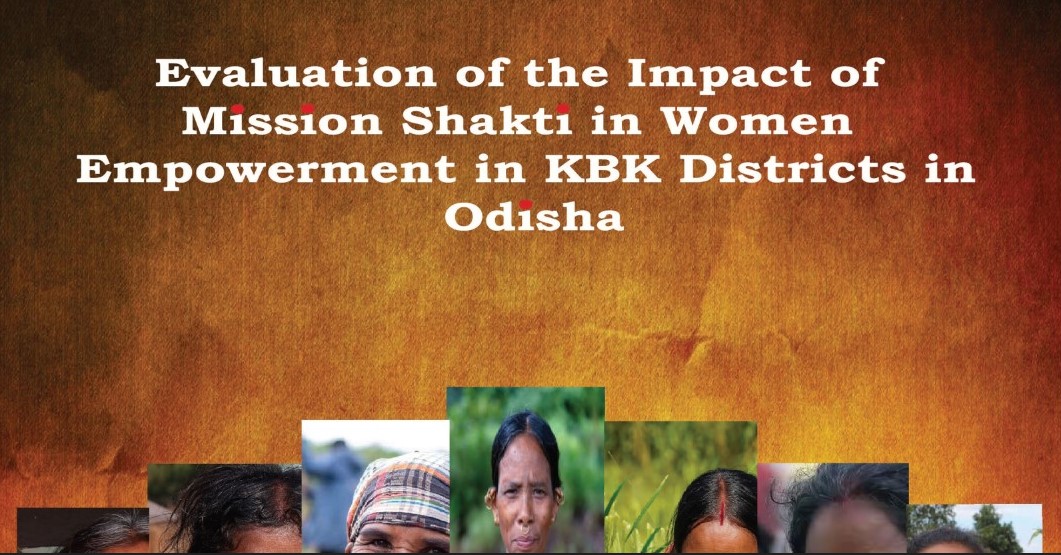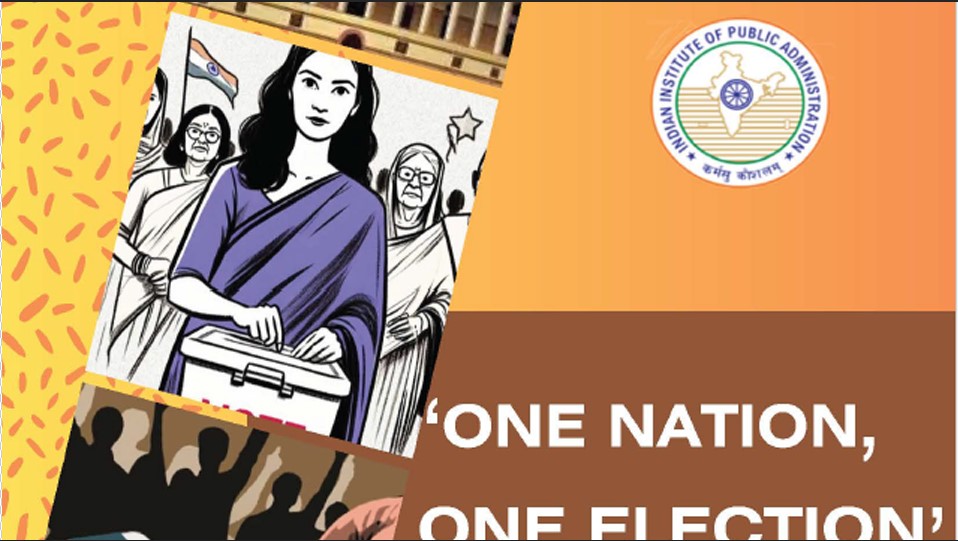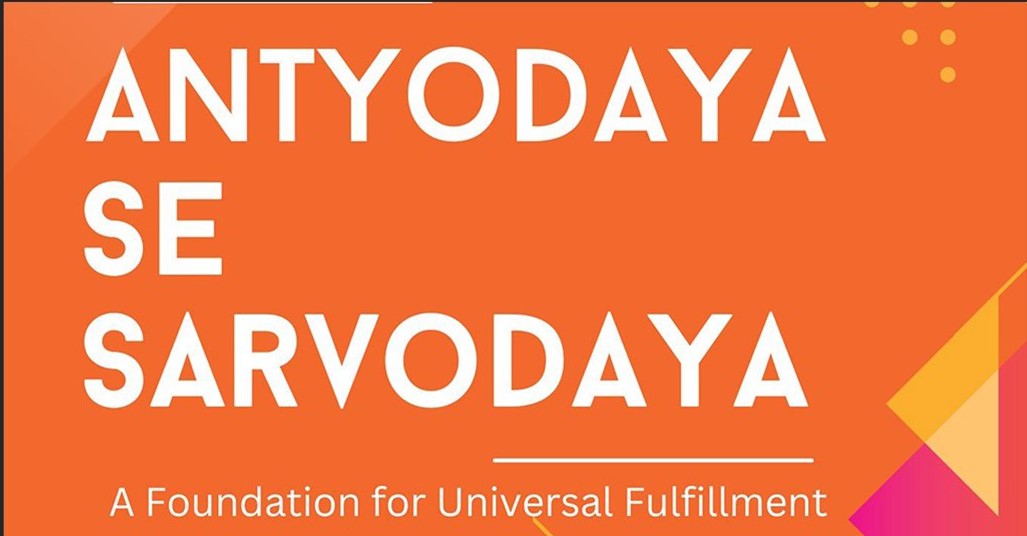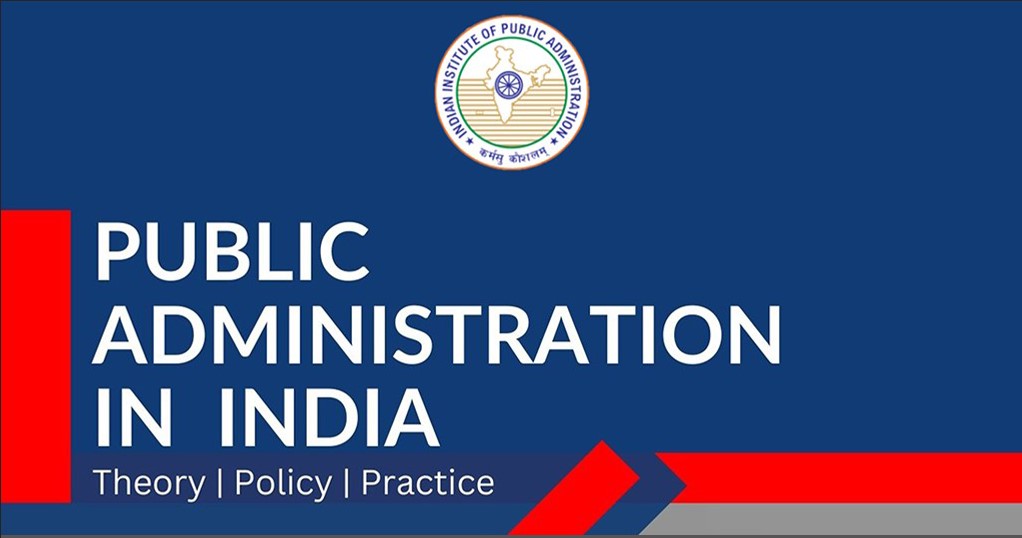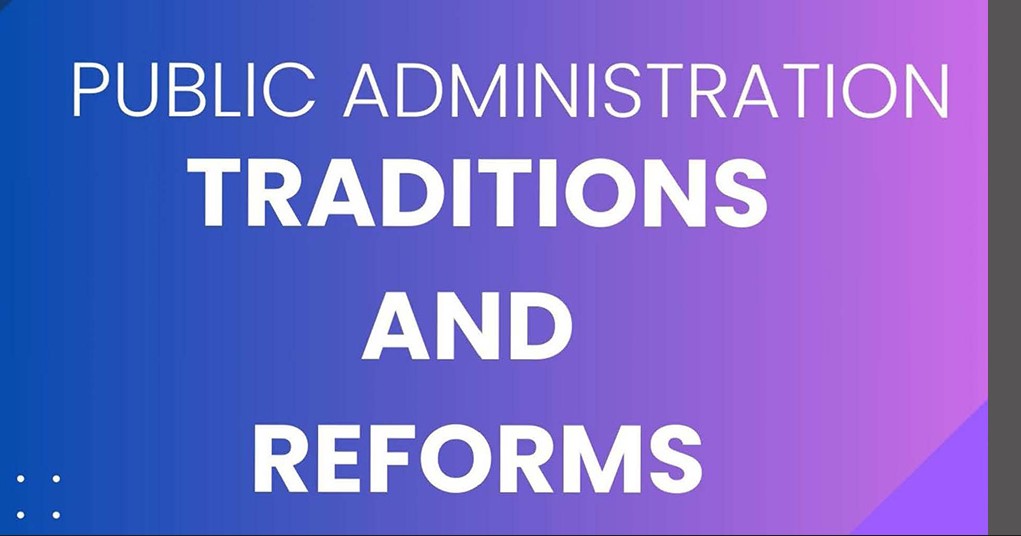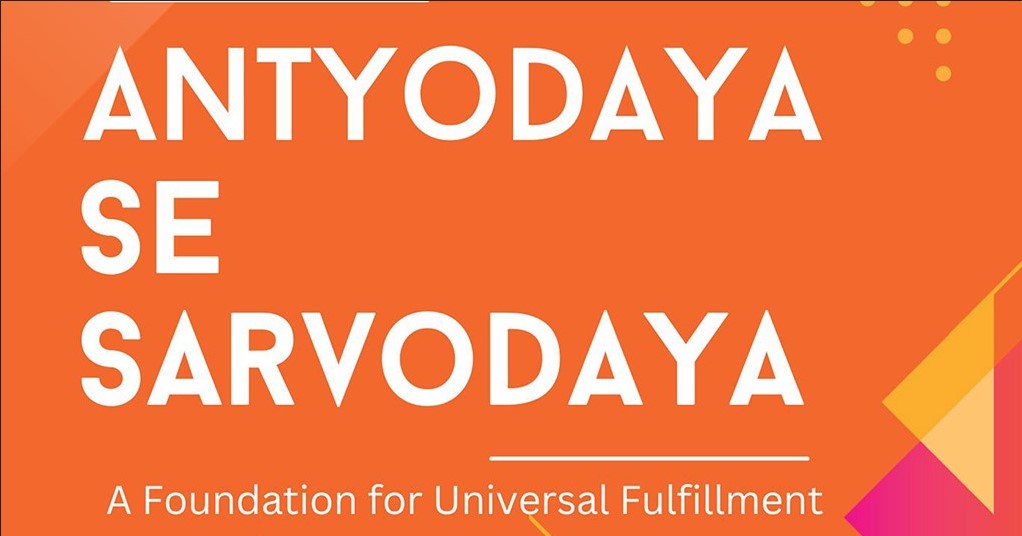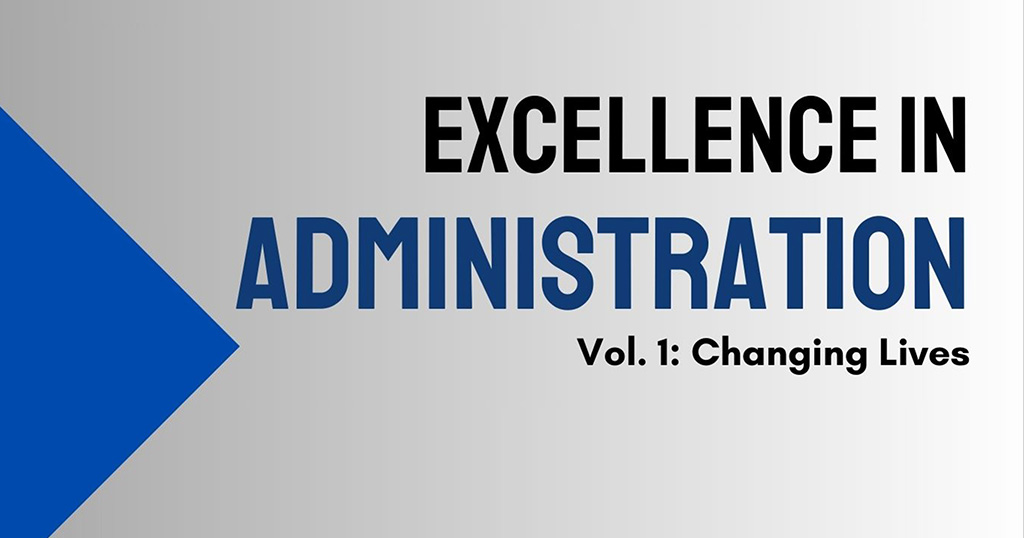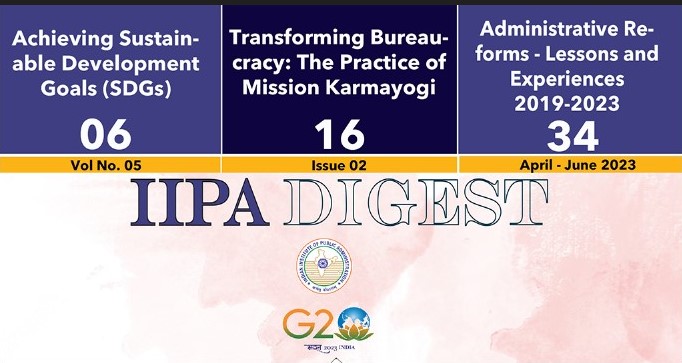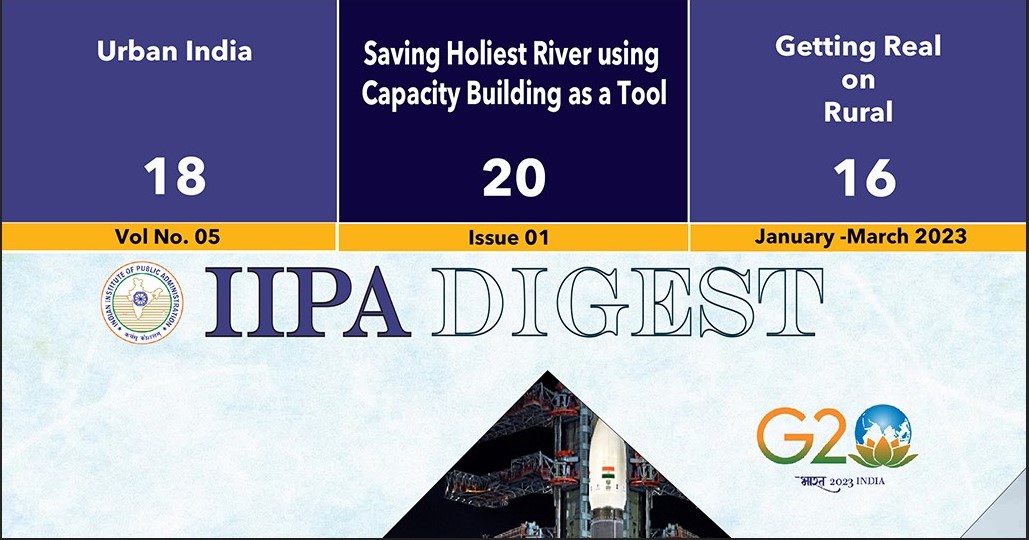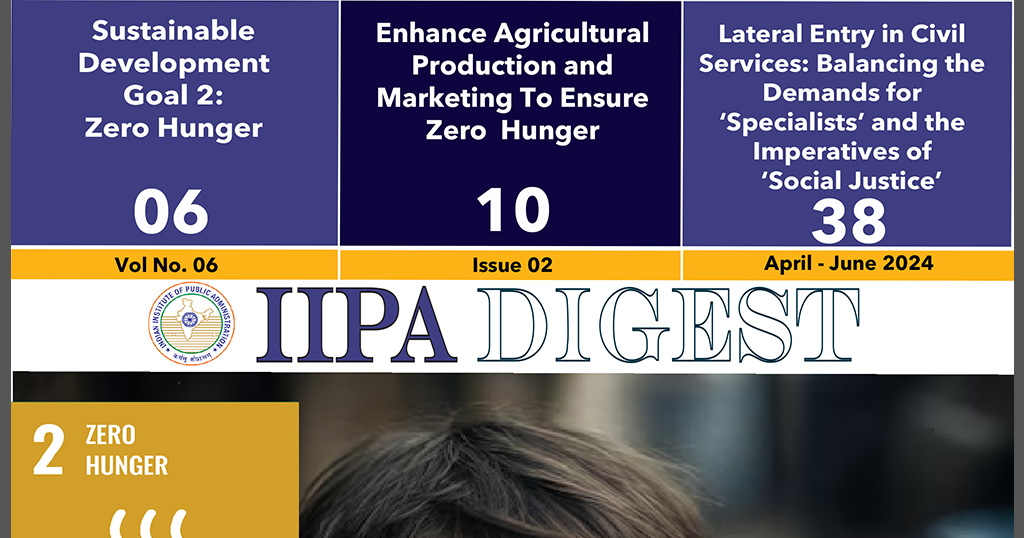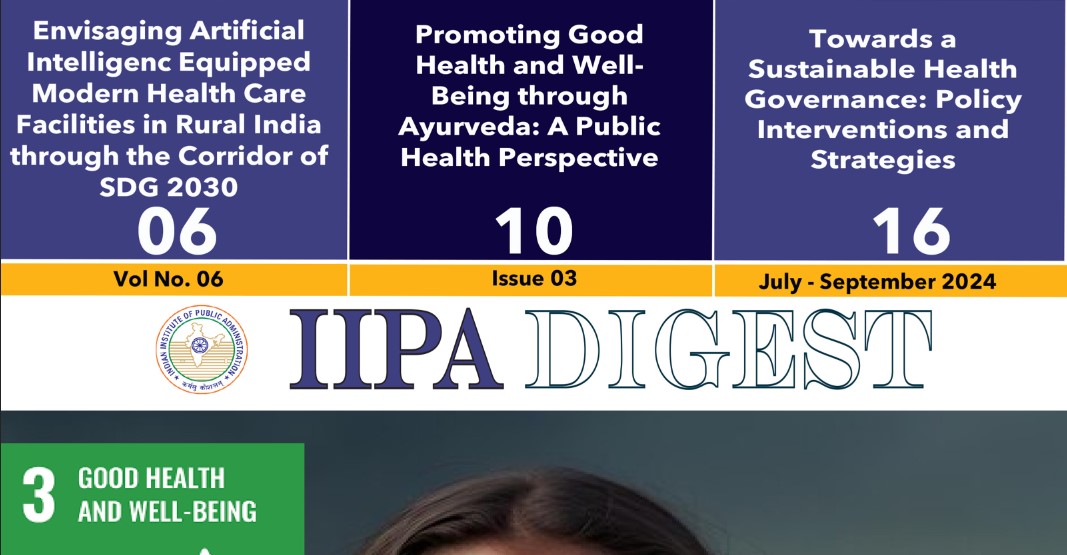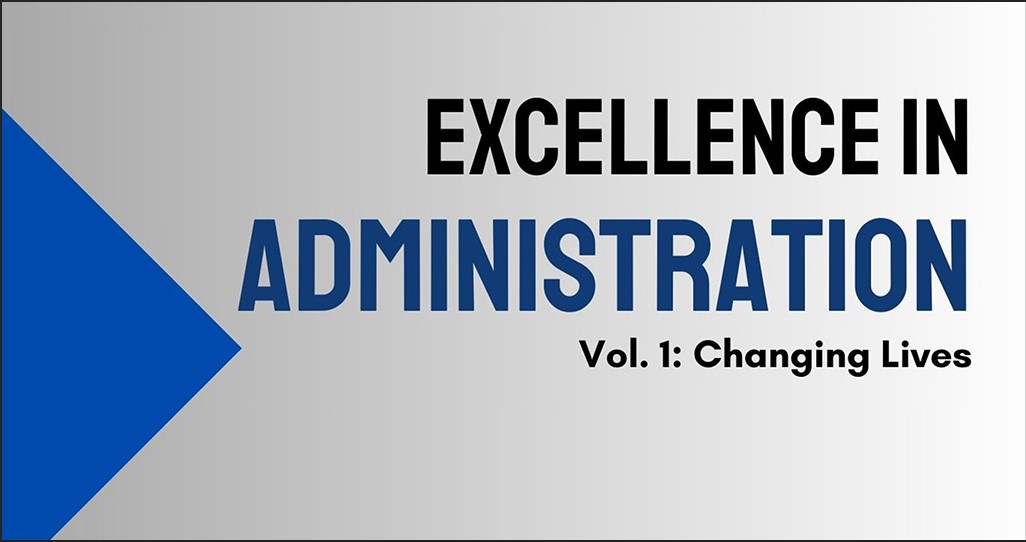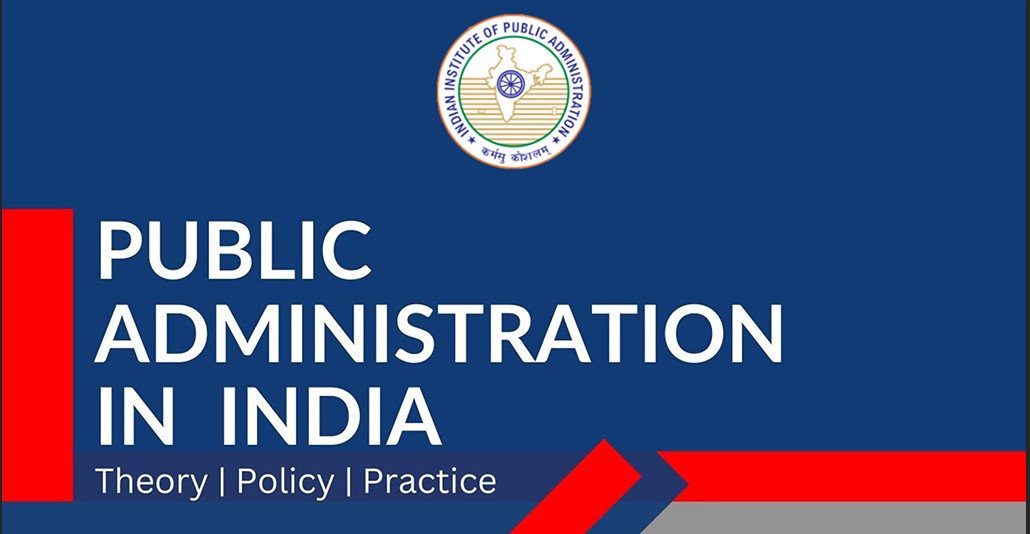Viksit Path: Kartavya Path
Be the designer of your world and not merely the consumer of it.
1. The vision of Viksit Bharat can be realised through Viksit States, and that the aspiration of Viksit Bharat should reach the grassroot level i.e. to each district, block, and village. For this, each State and District should create a vision for 2047 so as to realise Viksit Bharat @ 2047. All States may initiate Demographic Management Plans to address the issues of population ageing in future. Viksit Bharat is all about empowering citizens and reaching the last mile, for a developed India, the government system should support the aspirations of common people. Earlier thinking was that the government will do everything, but now thinking is that the government will work for everyone. Motto of the government is ‘Nation First-Citizen First’, today’s government is prioritising the deprived. Today’s aspirational citizens are not willing to wait for long to see changes in the systems. As the world is saying that India’s time has arrived, there is no time to be wasted by the bureaucracy of the country. The century of independence will be the golden century of the country when we will give first priority to our duties. Duty is not an option for us but a resolution now. Basis of all your decisions should always be the national interest. It is the duty of the Bureaucracy to analyse whether a political party is making use of taxpayers ’money for the benefit of their own organisation or for the nation.
2. A folklore in Rajasthan says, when a soldier stops feeding his horse in peace-time he has a lame and weak horse during war time. The Jan Vishwas 2.0 new philosophy of Nyaya not Danda – de-criminalisation of remaining provisions except that cause personal harms and frauds. This will blunt the corruption- a sense of humour on rule of law and may come down by design. Digital Public Infrastructure (DPI) the show-stopper in G20 Summit can create a National Open Compliance Grid - for each Ministry Department and Organisation (MDO) to implement digitization- bank of APIs. Non-Farm Job is the new god of market - not the outdated monetary and fiscal consolidation route of managing poverty and prosperity paradox as unintended outcome. India has created the world’s largest democracy on the infertile soil of the world’s most hierarchical society. Swaraj without Swadeshi would be half done. The politics devoted solely to political freedom was an empty concept, if not backed by economic power.
3. China’s highly decentralised fiscal system, local governments are responsible for providing almost all public services, including education, health, social welfare and infrastructure. China’s urban population has grown by almost 700 million since 1980. Cities have grown, prospered and invested in huge amounts of infrastructure. Public services have improved markedly, with universal education, health care, pensions and social welfare, albeit with uneven and often shallow coverage, but some lessons are worth learning. To maintain a growth rate of 7.6 per cent per year for the next 25 years, a few countries have done it, China has done it, but the more difficult point is whether we can do it with all the challenges like climate change, geopolitics, the difficulty of globalisation. Our social problems are not laws of nature or economics, they are choices the results of rules and regulations governing the economy actively framed by state -invisible hand.
4. India’s challenge since 1947 has not been unemployment (a low 4.9%) but employed poverty-as the poor can’t afford to be unemployed. The solution like-productive industries that don’t gift wrap self-exploitation as self-employed-employees with productivity to pay higher wages and employees with skills to work productively. The recent budget is an intervention for mass prosperity and putting employed poverty into museums while becoming the third largest economy on the planet. We must come out with mindset that job preservation is another form of job creation where creative disruption is the rule not an exception that few intellectuals than Indians are entitled. From being a predominantly import-driven country, India now exports many products to the world. The country has made its mark on the world stage in wide ranging sectors like defence, space, start-ups and sports. The confidence and enthusiasm of 140 crore citizens, which is the driving force behind the progress of our country. This is the decade of change which brings a lot of opportunities across sectors, States to utilise these opportunities and make policies and initiate governance programmes that are conducive for development through innovative approaches in policy making and execution.
5. The scale speed and skill of managing the Indian policy landscape also needs to address size shape and effectiveness of public policies. Micro-economic stability, physical infrastructure and rule of law are non-negotiable as is the laser focus on human capital. In the age of artificial intelligence and virtual reality- a lot of people are paying attention to models (LLM), the challenge for us is to pay attention to data.(privacy and proprietary concerns) AI firms will soon exhaust most of internet’s data of over 50bn web pages and almost all data-walls giving away. Back to business and business as usual shall continue to be quality of data than quantity of data. More data has not made any one wiser but better insight if of quality data has changed the fortunes of firms and nations dependent upon their risk-appetite. The current battle of ideas is not of math’s bits and bytes or even algorithms but blurred vision of prose and poetry being subjected to reasoning than imagining. Life and policies are not just subsets of frames to simplify things. AI models are able to peep behind paywalls on the ground of fair-use principles. The synthetic data or machine created data is limitless - with difference in scale and can lead to difference in principle with reinforced learning from human feedback (RLHF).
6. While Sabka Saath, Sabka Vikas, Sabka Vishwas, and Sabka Prayas’’ makes for a catchy slogan, we will be able to realize our aspirations only if our resource mobilization and allocation policy is consistent with the slogan. What is needed is to take lessons from history, recognise the vitality and resilience of India, the power of its world-view and utilize its strength which drove it to glorious heights and analyse its weaknesses which led to abysmal fall. Pick up the thread from the point where the continuum of our civilisational consciousness was lost and reorient the public policy in consonance with those strong points of Indian psyche which will be the engine of our future glory.
7. It is also important that we invest in improving the quality of education in higher education at all levels. Even IITs, IIMs, AIIMS, etc. must gear up for dealing with technology and climate related challenges. We cannot have teachers on contract for life, inadequate or poor-quality infrastructure, poor quality libraries and backward-looking curriculum and hope to become a developed country by 2047.
8. As a nation, our country has made great progress since independence. But a lot still needs to be done and achieved. All societies have some fundamental goals to be achieved; one of such goals for us is securing a just society and ensuring easy access to justice to all. Access to justice is a fundamental tenet of the rule of law. It is paramount important to enable people to exercise their rights, confront prejudice, make their voices heard, and hold decision-makers responsible. Access to justice is more than improving an individual’s access to courts or guaranteeing legal representation. It is an enabling tool for holistic development and economic progress.
9. eSakshya: A case of the road to hell being paved with good intentions? Many concerns are swirling around the eSakshya app and the recording of digital evidence that the Bhartiya Sakshya Adhiniyam mandates ESakshya, developed by the National Informatics Centre (NIC) with the ambitious aim of helping police record the scene of crime and the search and seizures and then upload them on to a cloud-based platform was one of the talking points when the three new criminal laws were rolled out. Many lauded the intention behind the new-age initiative in the Bhartiya Sakshya Adhiniyam, 2023, that replaces the Indian Evidence Act, 1872, but there were always doubts on whether all of India could keep up. According to the new laws, in any and all cases in which an FIR is being registered, there has to be digital evidence that is recorded and stored in the app according to procedure. This recording should then be sent to the District Magistrate, Sub-divisional Magistrate or Judicial Magistrate of the first class, according to section 105 of BNSS (Bhartiya Nagarik Suraksha Sanhita 2023). The transition from traditional paper-based systems to a completely digitised platform requires significant investment in technology and capacity building.
10. Covid a case of cooperative federalism- happy and healthy together when a calamity or a disaster strikes. Population Scale Solution and India -Scale implementation with bureaucracy -3 pillars 1) strategic planning and management 2) backed by awareness 3) supply chain- vaccine manpower and vaccination facilities all tagged CoWIN. Technologies that change societies are technologies that change interaction between people.
11. Aspirational society must be seen as opportunity than a burden- physical and social infrastructure or public oriented governance- address public grievances as if it’s a service to God. People should get precede in governance. Incentives for capacity building- karma points
12. Public policy as a Service by think tanks is the need of hour. The development debate in global south and low-income countries has two side but not joined at hips. Hunger and Prosperity has a long distance between the two. Hunger led politics can’t promote AI ML VR and social media. It can promote industry and industrialisation as the solution for job creation and income distribution. Many economists believe China’s leadership is preoccupied with the “supply side” of the economy—cultivating the technologies, kit and skills that enable China to produce things—but has not done enough to revive the “demand side.” Why should all countries be a manufacturing nation-the comparative advantage and competitive advantage work is a linear model. Exploit your comparative advantage and then lead by competitive advantage through people process and technology policy interaction.
13. Debate today is the rising role of service sector as gold standard of development. Growth in service sector - health education tourism and travel -not for business alone but pleasure and cultural exploitation is job guarantee in modern world. The skill one needs to thrive is education and aptitude KSAB can be KHAS (knowledge skill attitude behaviour and habit) ET and FT like 3D are substituting physical capital for labour with capital while world needs labour-intensive industrialisation. Rising skill and capital intensity of industrialisation is making global south into enclave sectors”- like mining except for some investment
14. Human Capital Investment (HCI) India’s economy is in a sweet spot of high economic growth, low inflation and fiscal and monetary stability. But the present economic scenario has certain negative features, mainly the low tax-to-GDP ratio (about 19%), the high current account deficit (3.5% of the GDP), and the stagnation of exports and jobs. These circumstances make it important to leverage the economy’s robustness and the government’s fiscal health to implement measures that can address its weaknesses and treat budgetary expenditure on the social sector as Human Capital Investment (HCI) The state governments in India play a pivotal role in governance, encompassing functions essential for public service delivery, law enforcement, and socio-economic development. To do so, states in India boast of very distinct hierarchy of roles and responsibilities, well-structured web of institutions and diverse sources of funding. This surely augments Indian state machinery to excel in executing specific, mission mode, and time-bound projects.
15. Paradoxically, states perform inadequately in managing routine public service delivery in critical governance sectors including education, healthcare, public safety, judicial processes (Accelerating India's Development: A State-Led Roadmap for Effective Governance" by Karthik Muralidharan, State-Led Approach: The book emphasises the role of state-level reforms in India's development journey., Public Services, It focuses on improving essential public services like education, healthcare, and infrastructure.- Faculty at IIPA has revisited the whole issues in new perspective and this publication is a small step in re-imagining Dr Murlidharan and his approach as appreciated. The problem lies not in the scarcity of resources, but in ineffective resource utilization, inadequate competencies, corruption and political interference resulting in underperforming state institutions. The line departments particularly bemoan of understaffing, particularly of technology skilled employees. To add fuel to the fire, the rigid hierarchies stifle creativity and a risk-averse bureaucratic mindset ignore participatory approach to governance. As a vicious repercussion, complete disregard for digital technologies and data driven decision-making gets exacerbated. Such unresolved past issues can cast long shadows over our nation’s unpredictable journey into the future. In the long-run, prioritization beats efficiency.
16. Seatbelt Mindset: drivers freeing himself at Noida border of safety belt when seat belts were mandatory in Delhi but not in neighbouring UP or Haryana- any one hiring a car know it. Law doesn’t mandate census every 10 years, or just a convention. Census is neither necessary nor desirable is the consensus. Does it really matter if we count our population down to each individual? Global indices are not fair to India, to say the least. Liberal-left bias towards a global north centric world view is the root and cause together. EGDI- E-Government Development Index by UN since 2003 for 193 countries, takes into account-online services, human capital and telecom infrastructure. 5th largest economy in GDP terms India is still ranked 105th. India has pole-vaulted in digital public infrastructure Fintech for financial inclusion at a speed and scale unprecedented. Unique Indian Model of - high speed mobile internet uses, lowest cost per GB data, online availability of over 1500 services in various states and half million CSC networks and digital literacy campaigns needs replication worldwide and UN EDGI must take note of it.
17. Growth Story India@Bharat Foreign Direct Investment (FDI)
1947-2023 India received $950bn FDI-last 90months alone $532bn that proves our global attractiveness of handsome return on investment in safe environment.
FDI has come from 162 countries, it speaks about global trust of investors interested in rewarding their stakeholders.
FDI has come in 61 sectors - opportunities in all sectors of economy when India is the global engine of growth lifting all the boats with enough water in Ganges after success of Namami Gange mission making it Aviral (continuous flow) and Nirmal (clean).
FDI has not gone to 7 metros but tier 2 and tier 3 - too big to absorb due to talent, Spread across the length and breadth of India.
GDP today is <$4TN India took 67 years for first trillion 9 years for 2nd and only 6 years for 3rd trillion - you know where we are headed to -be part of this great Indian pie.
GDP size matters Russia Italy UK are behind us 10th to 5th is not small leap of faith.
Becoming 3rd and overtaking Germany is just a - how soon and not when.
Targeting a GDP of $30TN ,life expectancy of 84 years and per capita income of Rs 1.5mn with TFR of 1.8 while population level of 1.65 bn by 2047 with over 1.12 bn in working age group.
18. Good governance is the key. People-centric governance solves problems and gives better results. The aim of Mission Karmayogi is to utilize the full potential of civil servants. You will not be judged by what you have done for yourself, but by what changes have you brought in the lives of the people. The power of the citizens of the country has increased in the new India, the power of India has increased. Growth and size both matters as is its distribution per capita. Growth matters momentum matters and speed scale matters. >5-7per cent growth is impressive but goal is to grow double digit for decades during Amrit Kaal and make it Kartavya kaal – Viksit path and kartavya path is ideal, desirable and doable all at the same time Fastest growing large economy before COVID-19 and fastest growing large economy after COVID-19 is the story of India. Only collective efforts of the Centre and States will lead to realizing the vision of Viksit Bharat@2047 We must target Zero Poverty as a priority for a Viksit Bharat and the Story has just begun.
Leave a comment
More articles from Governance & Polity


